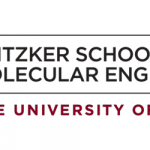Researchers at PNNL Invent Quantum Computer Simulator Called DM-SIM

(India.Education.Diary) A group of researchers at the U.S. Department of Energy’s Pacific Northwest National Laboratory (PNNL) have invented a quantum computer simulator, called DM-SIM, that is 10 times faster than existing methods.
The team, led by computer scientist Ang Li, achieved the increase in speed by harnessing the power of graphical processing units (GPUs), the lightning-quick processors originally designed for images and videos.
A reliable quantum computer simulator needs to capture the complexity of superposition, but it’s not that simple. Multiple qubits in a quantum computer can also exhibit quantum entanglement, meaning when they are entangled, if a single qubit collapses into an individual one or zero, the rest will also collapse like a house of cards.
“Physical qubits currently aren’t perfect or logical,” said Li. “They are more like nature where everything responds to its environment, so you have to find a way to represent noise and errors to create a more realistic simulator.”
But realism takes more time to calculate—and Li wanted to see if GPUs could hurry things up.
Li started working with GPUs in 2009 before they were as widely used as they are today. “Many major computational problems will move to GPU centric computations, and this work is part of that trend,” said Li. “Big applications need GPUs’ faster delivery to expand their expected performance.”
Quantum circuits are made through operations that change the qubit’s state. These operations are called gates. At the beginning of the gate, each qubit is like an arrow, or vector, pointing to the “0” direction. After the circuit ends and is measured, the qubits collapse to classic one or zero states. The statistical breakdown of ones and zeros indicates the results of the computation.
An accurate quantum computer simulator needs to describe both pure and mixed quantum states within each circuit. That’s why Li and his team used a method to describe the statistical state of a quantum system called a density matrix. Unlike the widely used state-vector, a density matrix contains all the information about a particular quantum state.
The research was funded by the Quantum Science, Advanced Accelerator (QUASAR) laboratory-directed research and development initiative. QUASAR research contributes to the National Quantum Initiative and is part of PNNL efforts to create the science and algorithms that advance hardware development and prepare for the future of quantum technology. The complete paper and a free download of the DM-Sim is available on GITHUB.
























